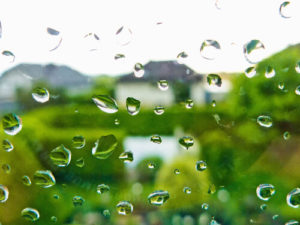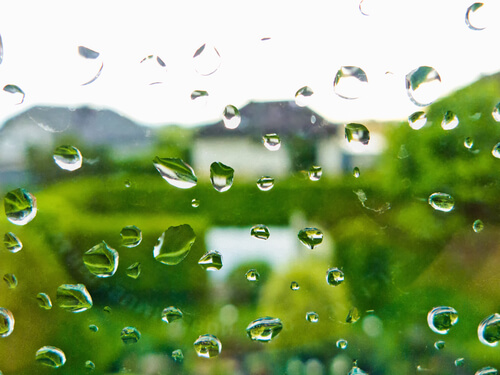Many people are drawn to our overall mild weather here in SC’s Upstate Region. However, if your home has a chimney, the rain and humidity can play havoc with its structural integrity. In Summertime we are prone to lots of afternoon thunderstorms, and in Wintertime, we can get a frigid cold snap that is often aligned with rain, snow or ice — all of which can do “a number” your chimney.
Moisture absorption can impact the state and structure of your chimney, most notably if the water intrusion is combined with very high or very low temperatures and for an extended period of time. Common results of water intrusion in masonry or metal chimneys include:
Leaking:
The most obvious result of excessive water absorption would be a leak. If you hear water dripping, see water trails or have water actively dripping in your firebox, or smell musty air coming out of your chimney during warm, humid days, you may be dealing with water getting in and staying in your chimney longer than it should. When it comes to water absorption, sooner is better than later if you want to interrupt the deterioration process that water entry often creates.
Masonry damage:
If your chimney is brick-built or has a brick or rock veneer, water is your chimney’s worst adversary. Water exposure can cause the bond between courses (rows of bricks) or mortar and stone to break (cracking between the brick/stone and the mortar). It can cause bricks to crack or spall (the face of the brick pops off), or even cause bricks fall off the chimney altogether. Once damaged, brickwork becomes even more vulnerable to water intrusion. Addressing the problem sooner rather than later can go a long way towards preventing further damage and ultimately extending the life of your chimney.
Rust:
Rust can take place on any metal part of your chimney unless it is stainless steel or copper. With extended exposure, rust can run rampant, if not addressed in a timely manner. Regular inspections can detect rust beginning on your chimney’s metal parts. A manufactured prefabricated chimney’s chase cover and flashing are vulnerable. A masonry chimney’s metal cap or flashing should be monitored regularly. Also check for rust within the chimney (the damper plate) or on gas log components. Some fireboxes are metal. If water entry has been chronic, a metal firebox could be severely undermined by rust and no longer functional (safe to use). If you think there are parts of your chimney or fireplace that are beginning to rust, a CSIA Certified Chimney Sweep can verify if your issue needs attention and can provide suggestions for resolution.
Creosote buildup:
This is one that is not commonly thought about. Creosote is a brownish-black, sometimes tar-like substance that often builds up inside a chimney used to vent a woodburning appliance. This buildup is worsened with increased exposure to moisture. Cold air outside of your chimney, dropping its overall temperature, creates condensation within the chimney when warm air from your fire is released through the flue. This is worse with uninsulated and exterior chimneys. Factor in that a wet chimney is a cooler chimney and you can see how water absorption can increase creosote build-up. Similar to how your warm breath creates condensation in cold air, the hot flue air condenses and the creosote particles stick to the insides of your chimney. Keeping the chimney as dry as possible can positively impact this process. Regular inspections will also make sure your flue is as clean as possible and will lessen the chance of a chimney fire that can result from creosote build-up.
Let our trained professionals here at Blue Sky Chimney Sweeps|Bless Your Hearth help determine overall condition, need for maintenance, issues with functionality, and even offer solutions for long-term issues. Regular inspections/maintenance can help insure there are no issues related to moisture exposure.

